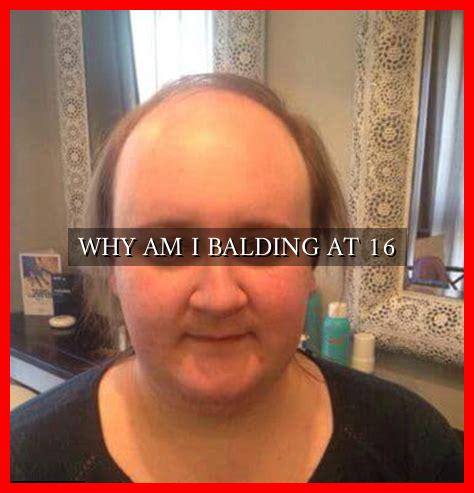-
Table of Contents
Why Am I Balding at 16?
Experiencing hair loss at a young age can be a distressing and confusing situation for many teenagers. While balding is commonly associated with older individuals, it is not uncommon for some teenagers to notice thinning hair or receding hairlines. In this article, we will explore the reasons why some individuals may be balding at the age of 16 and what steps can be taken to address this issue.
Genetics
One of the primary reasons for early onset balding is genetics. If baldness runs in your family, particularly on your mother or father’s side, you may be predisposed to experiencing hair loss at a young age. Male pattern baldness, also known as androgenetic alopecia, is a hereditary condition that can start as early as the teenage years.
. This type of hair loss is caused by a combination of genetic and hormonal factors.
Hormonal Imbalance
Hormonal imbalances can also play a significant role in causing hair loss in teenagers. Fluctuations in hormones, such as testosterone and dihydrotestosterone (DHT), can lead to the miniaturization of hair follicles and eventually result in hair thinning and balding. Hormonal changes during puberty can trigger this process, making teenagers more susceptible to hair loss.
Nutritional Deficiencies
Poor nutrition can contribute to hair loss at a young age. A lack of essential vitamins and minerals, such as iron, zinc, and biotin, can weaken hair follicles and lead to hair shedding. Teenagers who follow restrictive diets or have poor eating habits may not be getting the necessary nutrients to support healthy hair growth. It is important to maintain a balanced diet rich in vitamins and minerals to promote hair health.
Stress and Anxiety
Stress and anxiety can have a negative impact on overall health, including hair health. Chronic stress can disrupt the hair growth cycle and lead to increased shedding. Teenagers who are experiencing high levels of stress, whether due to academic pressure, social issues, or family problems, may be more prone to hair loss. Finding healthy ways to manage stress, such as exercise, meditation, or therapy, can help alleviate hair loss caused by stress.
Medical Conditions
Certain medical conditions can also contribute to hair loss in teenagers. Conditions such as alopecia areata, thyroid disorders, and autoimmune diseases can cause hair thinning and bald patches. It is essential to consult a healthcare professional if you are experiencing sudden or severe hair loss to rule out any underlying medical issues that may be causing the problem.
Treatment Options
If you are balding at 16, there are several treatment options available to help address the issue. These may include:
- Topical treatments: Over-the-counter or prescription topical treatments, such as minoxidil, can help stimulate hair growth and prevent further hair loss.
- Oral medications: Prescription medications, such as finasteride, can be effective in treating male pattern baldness by blocking the hormone DHT.
- Platelet-rich plasma (PRP) therapy: This procedure involves injecting platelet-rich plasma into the scalp to promote hair growth.
- Hair transplant surgery: In cases of advanced hair loss, hair transplant surgery can be a permanent solution to restore hair growth.
Conclusion
Experiencing hair loss at a young age can be a challenging experience, but it is essential to understand the underlying causes and explore treatment options to address the issue. Whether it is due to genetics, hormonal imbalances, nutritional deficiencies, stress, or medical conditions, there are ways to manage and treat hair loss in teenagers. By seeking professional help and taking proactive steps to promote hair health, it is possible to address balding at 16 and regain confidence in your appearance.
Remember, it is crucial to consult a healthcare professional or a dermatologist for personalized advice and treatment options tailored to your specific needs.





